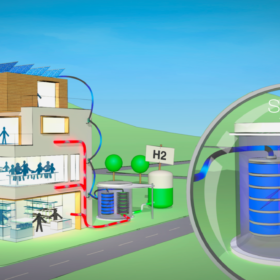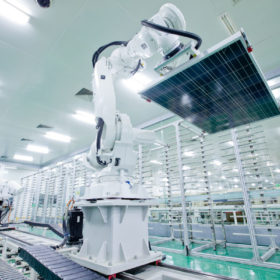New metallization tech to reduce microcracks in solar cells
A U.S. research group has developed a metal-carbon-nanotube composite – MetZilla – which can be embedded in commercial, screen-printable silver pastes and is said to reduce the formation of hotspots in solar modules and to prolong panel lifespan. The composite metal contacts are also ‘self-healing’ as they are able to regain electrical continuity after cycles of complete electrical failure caused by extreme strain.
New material for radiative cooling of solar panels
Spanish researchers have discovered a material said to offer radiative cooling and self-cleaning of devices which undergo critical heating during operation, such as PV panels. The thermal emitter enabled the scientists to lower the daytime temperature of silicon wafers by 14 degrees Celsius.
The long read: Considering the competitive landscape for HJT
The benefits of heterojunction technology are well known. But as the first modules come onto the market from REC Group’s new HJT lines, the competitive landscape is crowded, but not without opportunity.
Distributed storage market to grow nearly twentyfold by 2028
Market intelligence company Navigant Research has developed a country forecast of the global market. Incentives and pricing will be the main driver of installations, though the market will continue to be concentrated in certain key regions, including India, for now.
French consortium develops hybrid storage and co-generation system
The Smart Energy Hub can operate in electrolysis mode to store renewable energy as hydrogen, or in fuel cell mode to produce electricity and heat from previously produced hydrogen or methane. Its developers are the French Alternative Energies and Atomic Energy Commission and start-up Sylfen.
Lithium batteries – 12 lakh tons ready for recycling by 2030
The recycling market will experience a tenfold expansion between last year and 2030, driven by EV battery usage and portable electronics. Retrieving valuable metals and minerals is becoming a high priority and several dozen companies are already in position for the first big wave of end-of-life batteries.
The long read: Batteries for batteries
Earlier this summer, Delta-EE completed a new research study on ways to pair energy storage with EV charging infrastructure, across homes, workplaces and vehicle fleets, in addition to bus-charging applications. Robin Adey-Jones, a Delta-EE analyst, presents the report’s findings on the size of the opportunity that EV charging offers for stationary storage batteries.
JinkoSolar launches Tiger module Down Under
The Chinese manufacturer officially unveiled its high-efficiency product in Melbourne after celebrating a 13.6 MW panel order from the nascent Hungarian PV market.
Commercial rooftops will lead renewables growth in the next five years
Although the International Energy Agency’s latest renewables report forecasts impressive solar growth there is still a nagging feeling it has produced conservative estimates and the emphasis on sharing costs with grid operators is predictable.
A new battery mix to prevent dendrites
Scientists at the United States Pacific Northwest National Laboratory have discovered a root cause of dendrite formation, which can cause battery failure and even fires in lithium-ion technology. With this new knowledge, the group is now working on electrolyte recipes that eliminate dendrite growth entirely.














